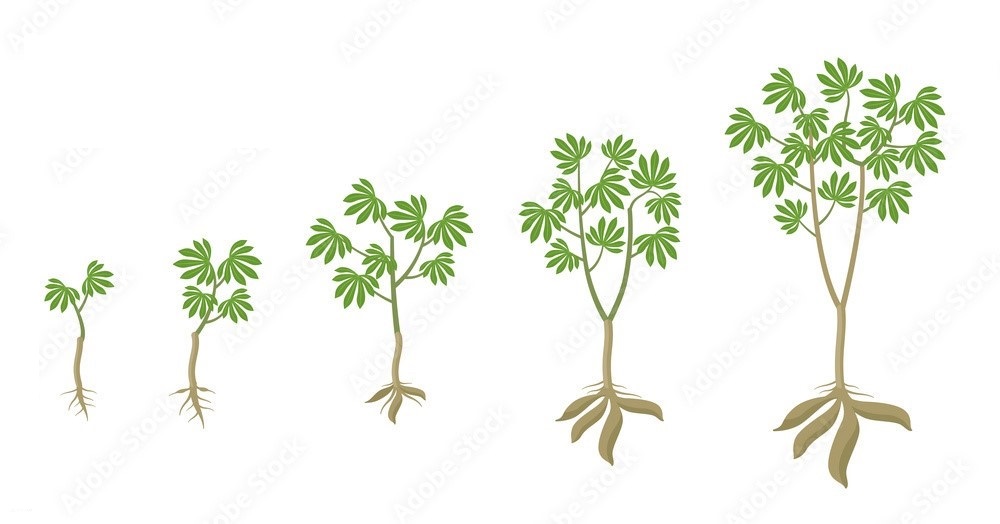
A Guide to Asexual Propagation with Stem Cuttings
Cassava, the resilient and versatile crop, has a remarkable secret – its ability to reproduce through the stems of a mature plant that has been harvested. In this blog post, we’ll explore the art of asexual propagation with cassava stem cuttings at Greenhills Cassava Farmstead, and the incredible benefits it offers in terms of both food security and sustainable agriculture
STEP 1: CUTTING SELECTION
We begin by selecting healthy cassava stems from mature plants. The stems are about 2-4cm thick. We sort through stems to ensure to exclude any stems with cuts or bruises, insect eggs or any signs of rot.
Step 2: PREPARATION
After about 10 days, we then cut the stems into pieces that are about 10-20 centimeters long. These nodes are critical because they are where new roots and shoots will form.


Each of the stems possesses at least two or three nodes (the small, raised sections along the stem).
Step 3: PLANTING

A farmer places the cuttings in the soil, ensuring they are positioned vertically with one node facing downwards. The depth it is placed in the soil such that at least one node remains above the soil
STEP 4: ROOT DEVELOPMENT
After a few weeks, roots will begin to emerge from the buried node, and new shoots will develop from the node that was left exposed above the ground.

Step 5: Growth and Harvest
With proper care and favorable conditions, in our case minimal rainfall and at least 6 months of sunshine, the cassava plant will grow and develop into a mature plant. Typically, our cassava variant (name), is ready for harvest in about 8-10 months.

Though cassava can be planted through seeds, its ability to reproduce through stem cuttings offers several remarkable advantages. Here are a few benefits of planting Cassava through asexual propagation.
- Genetic Purity: Asexual propagation results in genetically identical plants, ensuring that the offspring carry the exact traits of the parent plant. This is invaluable for preserving desirable characteristics in cassava varieties.
- Faster Growth: With stem cuttings, cassava plants mature more quickly than those grown from seeds. This faster growth is essential for a bountiful haachieving food security in regions with limited resources.
- Disease Resistance: When cassava is propagated asexually, it retains the disease resistance of the parent plant. This is a crucial advantage in maintaining healthy cassava populations.
- Sustainable Agriculture: Asexual propagation contributes to sustainable agriculture, allowing farmers to multiply cassava plants efficiently and reduce the need for continuous seed production.
Asexual propagation with cassava stem cuttings is not only an agricultural marvel but also a way that we prevent waste on our farms. It is a powerful tool for ensuring food security and sustainable farming practices. Once again, a testament to the resilience and adaptability of cassava.
Greenhills Cassava farmstead that helps you manage your own farm from wherever you are...
- October 24, 2023
- 11:34 am

